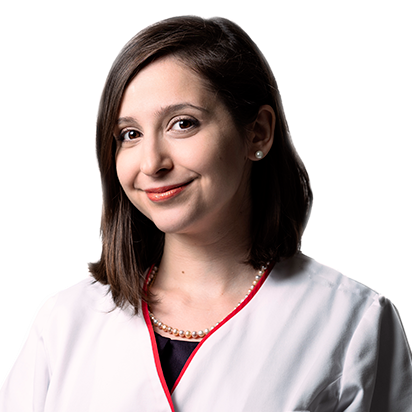Half of Health Care Providers Report Acne During COVID-19 Pandemic
The COVID-19 pandemic has drawn attention to acne associated with the prolonged use of medical face masks and raised awareness about the need for adequate screening, training and treatment of the condition.
Stefana Cretu, MD

Half of health care providers in Romania reported acne during the COVID-19 pandemic, according to a recent survey that detailed inadequate management of the condition associated with prolonged use of medical face masks.
The study included an online-based cross-sectional survey of health care workers at medical centers throughout Romania between December 17, 2020, and February 17, 2021.
Among 134 survey respondents, 50% reported current acne lesions, with 56.7% requiring treatment. Most of those (65.8%) self-medicated, while only 34.2% sought medical advice and 9% reported using anti-acne medication but identified as not having acne.
“Our results from a national survey suggest inadequate treatment of acne in relation to medical face mask usage,” the study authors, led by Stefana Cretu, MD, of Carol Davila University of Medicine and Pharmacy in Bucharest, Romania, wrote. “Similar to how all workers receive training and education concerning other occupational hazards and proper (personal protective equipment [PPE]) usage, (health care providers) should receive clear training, adequate screening, and treatment for adverse reactions relating to PPE use.”
Salicylic acid was used by most participants (61.36%) who received treatment, followed by topical retinoids (40.91%), benzoyl peroxide (20.45%) and azelaic acid (18.8%). Four participants (9.09%) used topical antibiotics.
Most common associations between treatments were retinoids and salicylic acid (18.18%), retinoids and benzoyl peroxide (13.64%), salicylic acid and benzoyl peroxide (13.64%) and azelaic acid with salicylic acid (9.09%). The study also found that only 14.2% of health care providers were open to accessing telemedicine as patients.
Respondents were mostly women (86.6%), doctors (79.9%) and millennials (74.62%). Those exhibiting acne reported black dots (59.7%), red papules (54.5%), rash (44.8%), erythema (41.8%), nodules (29.1%), itch (27.6%) and scales (26.9%).
“The participants from our cohort reported a high emotional impact of the lesions, and those who were more affected tended to seek help,” investigators wrote. “Few individuals reported acne treatment despite not self-identifying as having acne; one possible explanation could be disagreements regarding minimal criteria for acne diagnosis.”
Those who reported higher emotional impact of the acne lesions were more likely to seek treatment.
Multivariate analysis was used to adjust for other lifestyle factors that may influence acne.
Prolonged use of medical face masks contributes to acne because of friction, occlusion, moisture, increased temperature and changes to cutaneous microbiota. The resulting discomfort may lead to improper use of face masks, underscoring the need to properly address skin conditions, the study authors noted.
Along with treatment, other possible measures that could lessen the effects of prolonged medical mask use include shorter shifts, frequent breaks, rest in non-contaminated areas and telemedicine.
Dermatologists provided more virtual screening and care during the pandemic, and a study in 2020 found that teledermatology was more cost-effective than conventional care.
“Reluctance regarding the use of telemedicine by the HCP from our cohort in their capacity as patients was surprising, considering that most of the cohort consisted of young individuals,” investigators wrote. “Although not evaluated in our study, this hesitancy may also be due to a preference for a physical consultation.”
Limitations of the study include its small size, lack of diversity in gender and age and the absence of a clinical evaluation of participants. The study also didn’t analyze the type of face masks used.
The study adds to ongoing research related to skin conditions during the pandemic. A recent clinical survey detailed mask-induced skin changes, including acne, pigmentation and seborrhea. That study found a significant association between skin changes among doctors using masks for more than 6 hours a day (69.7%) compared with those using masks for less than 6 hours a day (30.3%).
The study, "Acne care in health care providers during the COVID-19 pandemic: A national survey," was published online in Dermatologic Therapy.